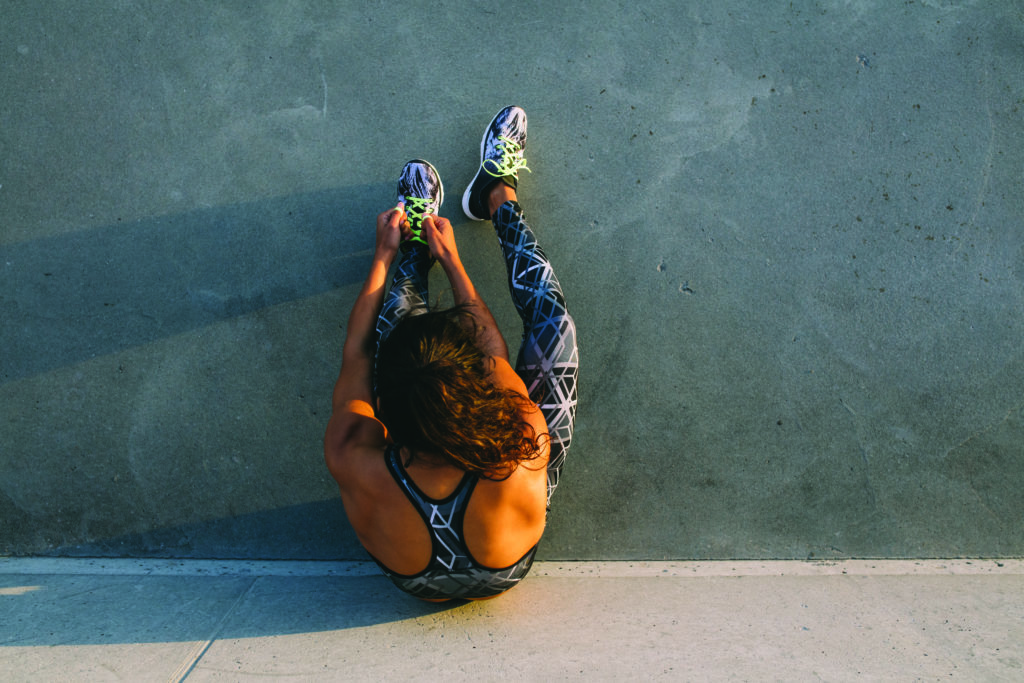Many people want to incorporate mindfulness more into their everyday lives, but they mistakenly believe that the process is complicated or time-consuming, and so they get discouraged from starting. The truth is, adding simple mindfulness practices into your daily life is easier than you think.
Summary
- Purpose: These five easy mindfulness exercises are simple to integrate into daily routines, helping you pause, reset, and connect with the present.
- 5 Simple Practices:
- Mindful Wakeup: Start your day with a brief, intentional routine before distractions arise. Sit quietly, take deep breaths, and set a clear intention—such as being kind or patient—which you revisit throughout the day.
- Mindful Eating: Transform meals into a richer experience by pausing to breathe before eating, tuning into your hunger cues, and savoring each bite. This practice helps you enjoy food more fully and respond to your body’s true needs.
- Mindful Pause: Recognize that most of our actions run on autopilot. By intentionally pausing and creating reminders (like sticky notes or triggers), you can shift from the “fast brain” (automatic responses) to the “slow brain” (deliberate decision-making), rewiring your behavior over time.
- Mindful Workout: Whether you’re exercising, dancing, or gardening, bring a mindful focus to your movement. Begin with a clear purpose, warm up, and maintain a rhythm where you coordinate your breath with your physical activity. This makes exercise not only a way to improve fitness but also a method to center your mind.
- Mindful Driving: Even in stressful traffic, a mindful approach can transform your experience. Take deep breaths, check in with your needs, and extend compassion to yourself and fellow drivers. This practice helps reduce road rage and stress, turning a frustrating situation into an opportunity for calm reflection.
- Benefits: These practices help reduce stress, improve concentration, and encourage a richer, more intentional experience of everyday life.
How often have you rushed out the door and into your day without even thinking about how you’d like things to go? Before you know it, something or someone has rubbed you the wrong way, and you’ve reacted automatically with frustration, impatience, or rage—in other words, you’ve found yourself acting in a way you never intended.
You don’t have to be stuck in these patterns. Pausing to practice mindfulness for just a few minutes at different times during the day can help your days be better, more in line with how you’d like them to be.
Explore these five simple mindfulness practices for daily life:
1) Mindful Wakeup: An Easy Mindfulness Habit to Help You Start with a Purpose
Intention refers to the underlying motivation for everything we think, say, or do. From the brain’s perspective, when we act in unintended ways, there’s a disconnect between the faster, unconscious impulses of the lower brain centers and the slower, conscious, wiser abilities of the higher centers like the pre-frontal cortex.
Given that the unconscious brain is in charge of most of our decision-making and behaviors, this is one of those simple mindfulness practices that can help you align your conscious thinking with a primal emotional drive that the lower centers care about. Beyond safety, these include motivations like reward, connection, purpose, self-identity and core values.
Setting an intention—keeping those primal motivations in mind—helps strengthen this connection between the lower and higher centers. Doing so can change your day, making it more likely that your words, actions and responses— especially during moments of difficulty—will be more mindful and compassionate.
How to add this in
This easy mindfulness exercise is best done first thing in the morning, before checking phones or email.
1. On waking, sit in your bed or a chair in a comfortable position. Close your eyes and connect with the sensations of your seated body. Make sure your spine is straight, but not rigid.
2. Take three long, deep, nourishing breaths—breathing in through your nose and out through your mouth. Then let your breath settle into its own rhythm, as you simply follow it in and out, noticing the rise and fall of your chest and belly as you breathe. If you find that you have a wandering mind or negative thoughts, simply return to the breath.
3. Ask yourself: “What is my intention for today?” Use these prompts to help answer that question, as you think about the people and activities you will face. Ask yourself:
How might I show up today to have the best impact?
What quality of mind do I want to strengthen and develop?
What do I need to take better care of myself?
During difficult moments, how might I be more compassionate to others and myself?
How might I feel more connected and fulfilled?
4. Set your intention for the day. For example, “Today, I will be kind to myself; be patient with others; give generously; stay grounded; persevere; have fun; eat well,” or anything else you feel is important.
5. Throughout the day, check in with yourself. Pause, take a breath, and revisit your intention. Simply observe, as you become more and more conscious of your intentions for each day, how the quality of your communications, relationships, and mood shifts.
2) Mindful Eating: Enjoy Every Mouthful With This Simple Mindfulness Habit
One of the most simple mindfulness practices is one that we most often overlook. We often eat on the go, in a rush, or while multitasking.
It’s easy enough to reduce eating to a sensation of bite, chew, and swallow. Who hasn’t eaten a plateful of food without noticing what they’re doing? Yet eating is one of the most pleasurable experiences we engage in as human beings, and doing it mindfully can turn eating into a far richer experience, satisfying not just the need for nutrition, but more subtle senses and needs. When we bring our full attention to our bodies and what we are truly hungry for, we can nourish all our hungers.
How to add this in
1. Breathe before eating. We often move from one task right to the other without pausing or taking a breath. By pausing, we slow down and allow for a more calm transition to our meals. Bring your attention inward by closing your eyes, and begin to breathe slowly in and out of your belly for eight to 10 deep breaths before you start your meal.
2. Listen to your body. After breathing, bring your awareness to the physical sensations in your belly. On a scale of 1 to 10, 1 being that you don’t feel any physical sensation of hunger and 10 being that you feel very hungry, ask yourself “How hungry am I?” Pay attention to what bodily sensations tell you that you are hungry or not hungry (emptiness in stomach, shakiness, no desire to eat, stomach growling, etc.). Try not to think about when you last ate or what time it is, and really listen to your body, not your thoughts.
3. Eat according to your hunger. Now that you are more in touch with how hungry you are, you can more mindfully choose what to eat, when to eat, and how much to eat. This simple practice of self awareness can help you tune in to your real needs.
4. Practice peaceful eating. At your next meal, slow down and continue to breathe deeply as you eat. It’s not easy to digest or savor your food if you aren’t relaxed.
5. If you don’t love it, don’t eat it. Take your first three bites mindfully, experience the taste, flavors, textures, and how much enjoyment you are receiving from a certain food. Make a mindful choice about what to eat based on what you really enjoy.
3) Mindful Pause: This Simple Mindfulness Practice Can Rewire Your Brain
It’s estimated that 95% of our behavior runs on autopilot—something I call “fast brain.” That’s because neural networks underlie all of our habits, reducing our millions of sensory inputs per second into manageable shortcuts so we can function in this chaotic world. These default brain signals are like signaling superhighways, so efficient that they often cause us to relapse into old behaviors before we remember what we meant to do instead.
Mindfulness is the exact opposite of these processes; it’s slow brain. It’s executive control rather than autopilot, and enables intentional actions, willpower, and decisions. But that takes some practice. Of all the simple mindfulness practices listed here, this one is likely to be the most challenging for many, because we are so accustomed to operating unconsciously.
Putting Your Slow Brain In the Driver’s Seat
Here’s why this shift can take a little extra effort. While my slow brain knows what is best for me, my fast brain is causing me to shortcut my way through life. So how can we trigger ourselves to be mindful when we need it most? This is where the notion of “behavior design” comes in. It’s a way to put your slow brain in the driver’s seat. There are two ways to do that—first, slowing down the fast brain by putting obstacles in its way, and second, removing obstacles in the path of the slow brain, so it can gain control.
The great news is, progress can be made in small steps. The more we activate the slow brain, the stronger it gets. Every time we do something deliberate and new, we stimulate neuroplasticity, activating our grey matter, which is full of newly sprouted neurons that have not yet been groomed for the fast brain.
How to add this in
Shifting the balance to give your slow brain more power takes some work, but here are some ways to get started and add some oomph to these simple mindfulness practices.
1. Trip over what you want to do. If you intend to do some yoga or to meditate, put your yoga mat or your meditation cushion in the middle of your floor so you can’t miss it as you walk by.
2. Refresh your triggers regularly. Say you decide to use sticky notes to remind yourself of a new intention. That might work for about a week, but then your fast brain and old habits take over again. Try writing new notes to yourself; add variety or make them funny so they stick with you longer.
3. Create new patterns. You could try a series of “If this, then that” messages to create easy reminders to shift into slow brain. For instance, you might come up with, “If office door, then deep breath,” as a way to shift into mindfulness as you are about to start your workday. Or, “If phone rings, take a breath before answering.” Each intentional action to shift into mindfulness will strengthen your slow brain.
4) Mindful Workout: Activate Your Mind and Your Muscles
Riding a bike, lifting weights, sweating it out on a treadmill—what do such exercises have in common? For one thing, each can be a simple mindfulness practice. Whatever the physical activity—dancing the Tango, taking a swim—instead of simply working out to burn calories, master a skill, or improve condition, you can move and breathe in a way that not only gets your blood pumping and invigorates every cell in your body, but also shifts you from feeling busy and distracted to feeling strong and capable.
Ready? The following steps, good for any activity, will help you synchronize body, mind, and nervous system. As you do, you will strengthen your capacity to bring all of your energy to the task at hand and reduce stress.
How to add this in
1. Be clear about your aim. As you tie your laces or pull on your gardening gloves, bring purpose to your activity by consciously envisioning how you want your guide your session. Or, as you climb on your bike you might say, “I am going to breathe deeply and notice the sensation of the breeze and the sun and the passing scenery.” As you enter the pool, you might say, “I’m going to pay attention to each stroke, and the sound and feel of the water surrounding me.”
2. Warm up (5 minutes). Try any basic moves—jumping jacks, stretching—and concentrate on matching the rhythm of your breath to your movement. By moving rhythmically in this quick exercise, your brain activity, heart rate, and nervous system begin to align and stabilize, and you transform something you might normally do on autopilot into an easy mindfulness habit.
3. Settle into a rhythm (10 to 15 minutes). Pick up the intensity, but continue to coordinate your breath and movement. If you have trouble doing this, then simply focus on your breathing for a few minutes. Eventually you’ll find your groove.
4. Challenge yourself (10 to 15 minutes). Try faster speed, more repetitions, or heavier weights, depending on what you are doing. Notice how alert and alive you feel when pushing yourself.
5. Cool down (5 minutes). Steadily slow down your pace until you come to a standstill. Notice the way your body feels. Drink in your surroundings.
6. Rest (5 minutes). Quietly recognize the symphony of sensations flowing in and around you. Practice naming what you feel and sense. Chances are you’ll feel awake and alive from head to toe.
5) Mindful Driving: Drive Yourself Calm, Not Angry
There’s nothing like heavy traffic and impatient drivers to trigger the “fight or flight” response. That’s why road rage erupts and stress levels soar, while reason is overrun. The worse the traffic, the worse the stress. Los Angeles, where I live, has some of the worst traffic around, and some of the most unserene drivers. Emotions run high, tempers flare, tires squeal.
But it doesn’t have to be like that. In fact, the snarliest traffic jam can provide an excellent opportunity to build your mindfulness muscle, increase your sense of connection to others, restore some balance and perspective, and create more simple mindfulness practices in your daily (busy) life.
How to add this in
Here are the steps to a simple behind-the-wheel practice I’ve been doing for a while. I’ve found it can work wonders.
1. First, take a deep breath. This simple, yet profound advice helps bring more oxygen into your body and widens the space between the stimulus of the traffic and your heightened stress reaction. In this space lies perspective and choice.
2. Ask yourself what you need. It may be in that moment that you need to feel safe, at ease or you just need some relief. Understanding what you need will bring balance.
3. Give yourself what you need. If ease is what you need, you can scan your body for any tension (not a bad thing to do while driving in any case) and soften any tension or adjust your body as needed. You can sprinkle in some phrases of self-compassion, such as, “May I be at ease, may I feel safe, may I be happy.” If your mind wanders, simply come back to the practice.
4. Look around and recognize that all the other drivers are just like you. Everyone on the road wants the same thing you do—to feel safe, have a sense of ease, and to be happy. Chances are you’ll see a number of fellow drivers who look a bit agitated, but you might also catch that one who is singing or actually smiling, and this will dissipate some of your own stress immediately. You can apply to all of them what you just offered to yourself, saying, “May you be at ease, may you feel safe, may you be happy.”
5. Take another deep breath. In 15 seconds or less, you can turn around your mood by applying these simple tips. When you feel the frustration of traffic rising, choose whatever you need to work on, and offer that condition to others. If you need to feel safe, say, “May I be safe, may you be safe, may we all be safe.” Breathe in, breathe out, you’ve sowed a seed of happiness.
Small Shifts Add Up to Better Living
It’s easy to think that tiny, daily actions don’t really make a difference. But when it comes to training your mind with mindfulness, small shifts can lead to big benefits over time. As an experiment, jot down a few sentences in a journal at the end of each day as you start to use these simple mindfulness practices. Notice changes in your perspective, interactions, and responses after two weeks, a month, six months. You might be surprised to see what a few small choices can yield.
This article also appeared in the April 2016 issue of Mindful magazine.










